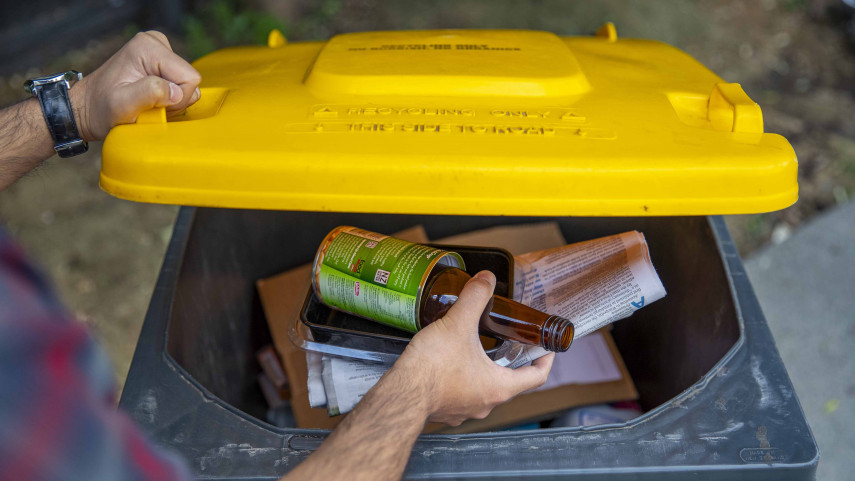Bin checks focus on helping people recycle correctly
Share this story
A team of four will begin spot checking the contents of yellow wheelie bins next week in a bid to improve people’s understanding of what stuff can be put out for recycling.
Up to 7500 bins across Christchurch and Banks Peninsula will be visually inspected each week by the four-strong team, who will work in pairs checking the contents of recycling bins put out for kerbside collection.
- Cardboard
- Aluminium cans
- Clear and coloured glass bottles and jars
- Metal tins
- Plastic containers
- Aerosol cans
- Paper
- Plastic bottles
- Empty cleaning containers
Remember to give your bottles and containers a rinse, make sure they are loose, and put the lids in the red bin.
“A gold sticker will be placed on bins that have the right stuff in them. Where the team finds incorrect items in the bin, they will leave educational information in the property’s mailbox which includes tips for recycling correctly.
“If they find a bin that is heavily contaminated with non-recyclable materials, then that bin will tagged for contamination and removed from the collection round for the day, with educational information provided so that residents understand why it has not been emptied,’’ Mr Trotter says.
“Our goal with these ongoing checks is to help residents reduce the amount of contamination they place in their kerbside recycling bins by making sure they are clear about what can and cannot be recycled.’’
Mr Trotter says residents will be informed by leaflet drop when the bin checkers are operating in their area.
“The team carrying out the checks will be wearing high visibility vests and photo identification so people should be able to easily identify when they’re working in their neighbourhood.
“Bins that are checked will be revisited at a later date to ensure people are continuing to recycle correctly,’’ Mr Trotter says.
“The reason why we are putting so much effort into this is because we want to ensure that we recycle as much as possible. The companies that take our recyclable material have a low threshold for contamination. If a load has too much of the wrong stuff in it, they will simply reject it and it will be sent to landfill. We want to avoid that so we need to make sure people are recycling right.’’
Mr Trotter says if people are confused about what can go in the yellow wheelie bin, he highly recommends they download the wheelie bins app, which has information on what can go in each of the bins.
“It’s a great tool and will help ensure you always bin it right,’’ he says.

